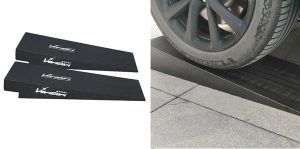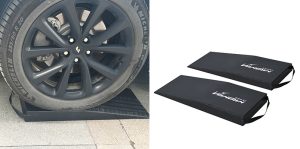In modern warehouses, efficiency and safety are critical to maintaining competitive operations. As distribution centers handle increasing volumes and heavier loads, heavy duty ramps have become essential infrastructure for optimizing material handling processes. From bridging height differences to enabling smooth equipment movement, these ramps play a key role in improving workflow, reducing downtime, and enhancing workplace safety.
The Role of Ramps in Warehouse Material Handling
Warehouses often require frequent movement of goods between loading docks, storage areas, and transport vehicles. Differences in floor height, dock levels, and temporary work zones can create bottlenecks. Heavy duty ramps provide safe and stable transitions for forklifts, pallet jacks, carts, and automated guided vehicles (AGVs), ensuring continuous material flow without interruptions.

Key Advantages of Heavy Duty Ramps in Warehouse Operations
1. Increased Operational Efficiency
Heavy duty ramps eliminate the need for time-consuming lifting or manual repositioning of goods. By allowing equipment to move directly between areas, ramps help shorten travel paths, reduce loading times, and improve overall throughput.
2. Enhanced Safety and Reduced Risk
Designed to support high load capacities, heavy duty ramps feature reinforced structures, anti-slip surfaces, and edge protection. These features reduce the risk of accidents, tip-overs, and worker injuries, especially in high-traffic warehouse environments.
3. Support for Multiple Handling Equipment
From forklifts and pallet trucks to conveyor systems and mobile robots, heavy duty ramps accommodate a wide range of material handling equipment. Their versatility makes them suitable for manual, semi-automated, and fully automated warehouses.
4. Flexibility for Changing Layouts
Many warehouses operate in dynamic conditions where layouts evolve over time. Portable or modular heavy duty ramps allow facilities to adapt quickly to seasonal demand, new product lines, or temporary loading zones without major construction.
Design Features That Matter in Warehouse Ramps
To deliver long-term value, warehouse heavy duty ramps should include:
- High load ratings suitable for forklifts and fully loaded pallets
- Durable materials such as structural steel or high-strength aluminum
- Low approach angles to protect goods and equipment
- Anti-slip surfaces for safe operation in dusty or wet conditions
- Corrosion-resistant finishes for long service life
These design considerations ensure consistent performance even under continuous, high-frequency use.
Impact on Labor and Cost Efficiency
By streamlining material movement, heavy duty ramps help reduce labor intensity and equipment wear. Faster loading and unloading cycles translate into lower operational costs, reduced overtime, and improved asset utilization. Over time, the return on investment becomes evident through improved productivity and fewer workplace incidents.
Supporting Compliance and Safety Standards
Heavy duty ramps designed for warehouse use can help facilities meet OSHA and workplace safety requirements. Proper load ratings, surface traction, and edge protection contribute to a safer working environment and simplify safety audits.
Heavy duty ramps are more than simple access solutions—they are strategic tools for improving warehouse material handling efficiency. By enhancing safety, flexibility, and operational flow, these ramps support faster, safer, and more cost-effective warehouse operations. As logistics demands continue to grow, investing in the right heavy duty ramp solutions is a smart step toward building a resilient and high-performance warehouse.



